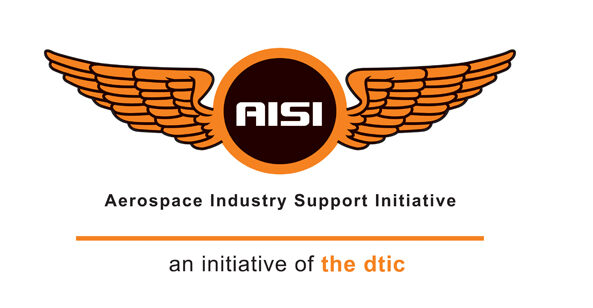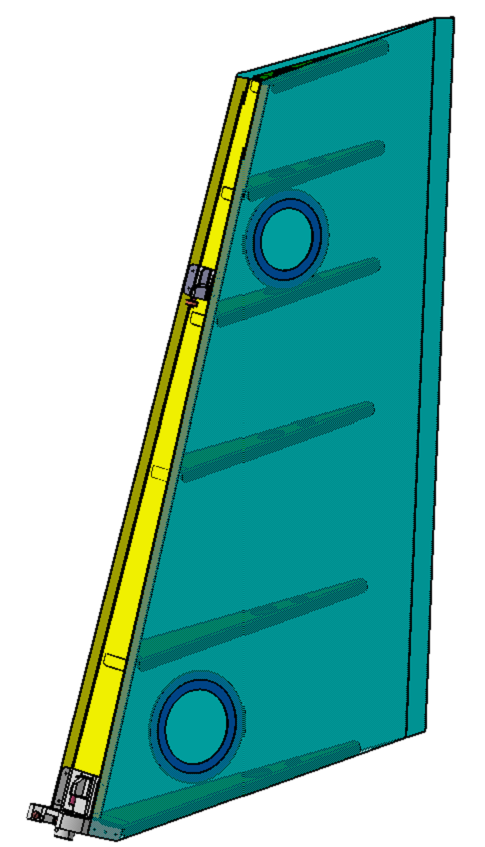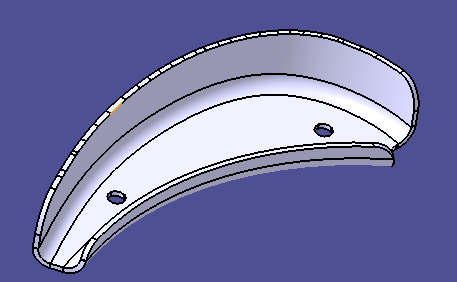In line with its vision of helping the local aeronautics and related sectors to improve their global competitiveness, the Aerospace Industry Support Initiative (AISI) and global aviation leader Aerosud are employing advanced manufacturing capabilities to drive down costs and weight of components.
The AISI is an initiative of the Department of Trade and Industry (the dti) and is hosted and managed by the Council for Scientific and Industrial Research.
Marié Botha, AISI Manager, says, “Continuous cost reduction while maintaining world-class quality and safety standards is of increasing importance to this sector. Our work with Aerosud involves exploring manufacturing technologies that will allow it to reduce costs on existing and future materials and processes. Cost and weight reduction to promote efficiency and ultimately achieve reduced cost is critical.”
The four projects (detailed below) illustrate how advanced manufacturing is being industrialised in the South African aerospace industry. They are:
- Process design of continuous fibre-reinforced thermoplastic (CFRTP) joining methods
- Process design and validation of CFRTP overlap joining method
- Process design of titanium fluid-cell forming
- Localisation and industrialisation of insulation blankets
Process design of continuous fibre-reinforced thermoplastic (CFRTP) joining methods
The process design of CFRTP joining methods is one of the technologies that will enable Aerosud’s participation in the international CFRTP market.
Within the context of this research project, which started in 2007 and was co-funded by the Department of Science and Technology’s Advanced Manufacturing Technology Strategy, a CFRTP stamp-forming process was developed. Subsequently, an industrial process was developed with AISI support. This led to the successful implementation of manufacturing processes for 1 800 frame clips per month for the Airbus A350 programme.
Joints between metal components and CFRTP structures were investigated as an integral part of major assemblies. A complete assembly for installation on aircraft will be produced and tested to ensure that the full process design cycle is understood and tested.
Aerosud Research and Technology Director, Wouter Gerber, explains, “These frame clips are made for the centre fuselage of the aircraft. They are class 1 primary parts and secure the fuselage skin panels to the fuselage structural framework. For example, there are more than 470 types of frame clips produced by Aerosud for the A350, and more than a 1 000 Aerosud frame clips in each A350.”
After the clips are formed at Aerosud, they are shipped to Spirit Aerostructures in the US where the clips are assembled to the aircraft frames and skins using rivets and bolts. The assembled panels are fed into the Airbus assembly lines in France where they are mounted onto the aircraft.
Gerber adds, “This research project has allowed Aerosud to understand the complexity of the technology better; we have not found the answer to all the questions yet but we have found the right questions at least.
“One of the most relevant achievements is the formation of a coherent multidisciplinary development group that can perform all the functions relevant in the lifecycle of the product – from design and analyses to tool design, manufacture, assembly and structural verification. Our next step is to package the rest of the questions that we discovered into logical work packages and start developing solutions that will fit our environment.”
Process design and validation of CFRTP overlap joining method
Aerosud’s current Airbus A400M cargo linings project requires the manufacture, qualification and delivery to the final assembly line of various CFRTP parts. One such CFRTP part, notably the lower connection units (LCUs), has large complex-geometry parts and has proved extremely difficult to manufacture from a single sheet of CFRTP material.
Two problems therefore must be addressed: high manufacturing scrap rates, and difficulties in achieving the correct geometry of the parts. It was proposed that the LCU parts be manufactured as per design definition, using small multiple sheets of CFRTP material. This, however, implies joining the individual blanks in the forming process of an LCU part – a new production process that has not yet been fully defined, industrialised and qualified.
This project aims to design, industrialise and validate the process of joining of multiple CFRTP blank parts to create a larger single-piece complex-geometry CFRTP part that will comply to Airbus requirements.
Process design of titanium fluid-cell forming
The aerospace industry is constantly looking for new and improved ways to design more fuel-efficient aircrafts, and the material characteristics of titanium provide the required level of strength and durability without adding excess weight.
However, to maintain and grow the current supplier’s (Aerosud) value proposition to original equipment manufacturers (e.g. Airbus), continuous cost reduction is the primary deciding element.
Titanium and its alloys are extremely attractive because of the galvanic compatibility with carbon-based composites and strength-to-weight ratio. This metal is also very expensive, emphasising the importance of demonstrating the capability to manufacture complex shapes from sheet as opposed to expensive machining.
This project will develop and demonstrate a capability to design a complete process chain for the manufacture of titanium sheet-based products, using hydroforming for aviation applications.
Hydroforming or fluid-cell forming utilises a process that uses high pressure fluid to form metal into the required shapes.
Localisation and industrialisation of insulation blankets
To further reduce manufacturing costs and improve Aerosud’s competitiveness, the manufacture of insulation assemblies will be industrialised at an Aerosud-certified location. This project will not only advance the capability to assemble and deliver assembled components, but will also bring foreign spending back to South African companies through localisation of this technology.
This AISI-supported project will deliver a fully certified and industrialised process for the manufacture of A400M insulation blankets as per the Airbus requirements. The industrialisation of the assembly will create an additional five permanent jobs to deliver approximately 550 insulation assemblies per month.
According to Brian Ingram from Aerosud, the company is pursuing this project as an ideal localisation initiative. The insulations are currently purchased from Canada at high cost. The product will attract a small amount of labour, where the skill level is reasonably low. The labour requirement can also be filled by persons with disabilities.
Ingram reports, “The required capital equipment has been purchased and the design and industrialisation processes to support production are in full swing. The process mapping was initiated in January 2016 and the current expected date for the machine is April 2016.”
The project has also delivered some unintended benefits. “Due to the versatility of the cutting machine that we selected for this programme, several other areas of process improvement have been identified. The most significant opportunity is the automated cutting of prepreg material (a reinforcing fabric which has been pre-impregnated with a resin system). Interesting concepts on possible process and efficiency improvement in the manufacture of the insulations have been tabled as a result of this initiative,” he concludes.






